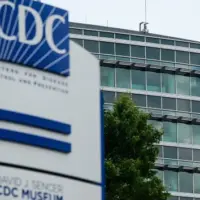
(IDAHO) — More than six months after Idaho’s near-total abortion ban went into effect, a small town nestled in the state’s northern mountain ranges lost its labor and delivery service — and access to such care could now be imperiled further by looming Medicaid cuts.
Bonner General Health, located in Sandpoint, Idaho, announced in March 2023 that it would no longer provide obstetrical care, citing the state’s “legal and political climate” as one of the factors that drove the decision. Abortions in Idaho are illegal except in the cases of rape, incest and the life of the mother.
The hospital in the city of around 10,000 people was one of three health systems in Idaho to shutter their labor and delivery services in recent years. The state has lost over a third of its OB-GYNs — 94 of 268 — since the ban was enacted in 2022, according to a new study in medical journal JAMA Network Open.
Local health care providers and advocates ABC News spoke with said that Medicaid cuts could put additional labor and delivery services at risk of closing — adding further pressure to Idaho’s already strained maternal and reproductive health care system.
More than 350,000 of the state’s residents are insured by Medicaid, including those covered by the expansion plan voters approved through a ballot measure in 2018. Idaho was already seeking federal approval to institute its own work requirements after Gov. Brad Little signed a Medicaid cost bill this spring.
Under the federal changes, the state could lose $3 billion in funding over the next decade and 37,000 residents could lose coverage, according to analysis by KFF.
“We are living with the consequences of when you criminalize practicing medicine, you lose doctors, and I think that, coupled with these cuts at the federal level, are going to prove devastating for Idaho’s already precarious rural health system,” Melanie Folwell, the executive director of Idahoans United for Women and Families, the group spearheading a ballot initiative to restore abortion rights, told ABC News.
After Bonner General closed its obstetric services, Kootenai Health, located an hour south, inherited its patients, which included residents across the northern tip of the state. Some women now have to drive two to three hours to get prenatal care or to deliver at Kootenai, according to one of its OB-GYNs, Dr. Brenna McCrummen.
Traveling that far for care, especially in cases of complications, can endanger women and infants, McCrummen noted.
“There have been patients that have delivered on the side of the road because they’re not able to get to the hospital in time. There have been babies that have gone to the NICU who didn’t do as well as they probably would have had they not had to travel long distances,” she told ABC News.
The loss of OB-GYNs in the state has hit rural areas like those in the north especially hard, the JAMA Network Open study noted. A vast majority of the remaining physicians providing obstetric care are concentrated in Idaho’s seven most populated counties, leaving only 23 OB-GYNs to serve a population of over half a million across the rest of the state, according to the study.
Those giving birth aren’t the only ones affected by the shortage of physicians. OB-GYNs like McCrummen have packed schedules, leading to long wait times for other reproductive care. Patients seeking annual exams, for instance, often have to book five months in advance, McCrummen explained. These exams provide vital preventive health services, such as screenings for cervical and breast cancer.
Across the U.S., more than 35% of counties are maternity care deserts — areas that lack obstetrics clinicians — according to Dr. Michael Warren, the chief medical and health officer of the March of Dimes, a nonprofit focused on maternal and infant health.
Reductions to Medicaid funding could exacerbate the problem, Warren told ABC News.
“The worry is that as these changes are happening in the Medicaid space, it’s going to be harder, particularly for rural hospitals, to maintain those obstetric services, and if they discontinue those, we’ve got more maternity care deserts, and we’ve got a greater risk of both moms and babies having worse outcomes,” Warren said.
The Medicaid cuts were passed into law in July as part of President Donald Trump’s massive tax and policy bill. Idaho Sen. Mike Crapo, a Republican who serves as chairman of the Senate Finance Committee, defended the bill in a press release earlier this month, saying that “targeting waste, fraud and abuse in the program ensures that it stays financially viable for the populations who need it most.” Crapo has also argued that the legislation’s $50 billion rural hospital fund is the “largest investment in decades in rural health care.”
In Idaho, Medicaid covers around a third of births, according to data from March of Dimes. Even before cuts to coverage, labor and delivery units were difficult to keep open, Toni Lawson, a vice president of the Idaho Hospital Association, told ABC News.
Lawson explained that such units require “special equipment” and “specially trained staff” on call, which is expensive to maintain — especially in rural areas with lower birth volumes and where Medicaid reimburses less than cost. Additionally, she said, hospitals have had difficulty recruiting and retaining qualified OB-GYNs amidst Idaho’s abortion restrictions.
As a result, looming reductions to Medicaid funding could push these healthcare systems over the edge, according to Lawson.
“What you’ll see in Idaho, before you see hospitals close, is we’ll have more closures of labor and delivery services,” she said.
These cuts could also worsen outcomes for the women who lose coverage, physician assistant specialist Amy Klingler explained.
“If patients don’t have access to insurance and they don’t have access to Medicaid, sometimes they delay prenatal care, we don’t catch complications early enough, and it puts the baby and the mother’s lives at risk,” Klingler, who works in a small mountain town in central Idaho, told ABC News.
The two problems can compound — Klingler noted that the risk of not catching complications early on is heightened when the same women also have to travel further to receive care.
While she is able to provide prenatal care to her patients, the closest hospital that can deliver babies is a 60-mile drive from her clinic — a route she says that lacks cell service for 45 miles.
“So in the best circumstances, it takes planning and forethought. And then when things are serious and complicated, it’s much more dangerous,” Klingler said.
“Complicated pregnancies in Idaho are the scary ones right now,” she added.
In cases when the mother’s health becomes at risk, health providers say that the state’s abortion ban limits the emergency care they are able to provide. A state court issued a ruling in April slightly expanding the medical exception to the ban in response to a lawsuit filed by the Center for Reproductive Rights, but advocates still argue the existing law constricts physicians’ ability to supply adequate care.
The organization Idahoans United for Women and Families is currently gathering signatures to get a measure on the ballot in 2026 to return the state to the standard of abortion access it had before the Supreme Court overturned Roe v. Wade in 2022.
However, Lawson said “there is no silver bullet” to solve depleted access to maternal and reproductive care.
“It is going to have to be a combination of things and certainly removing barriers to recruitment is an important part of that,” she said, adding that the state must also address rural hospitals’ precarious financial position amid the projected loss of Medicaid funding.
Breana Lipscomb, the senior manager of maternal health and rights at advocacy group the Center for Reproductive Rights, noted that all of these factors are “working in tandem” to restrict access.
“It’s making health care even further out of reach for people, and this is particularly concerning for Black people, for people living in rural areas, for low income folks and for people with capacity to birth,” Lipscomb said.
“I am really afraid of what we might see,” she added.
Copyright © 2025, ABC Audio. All rights reserved.














